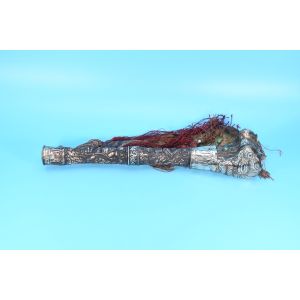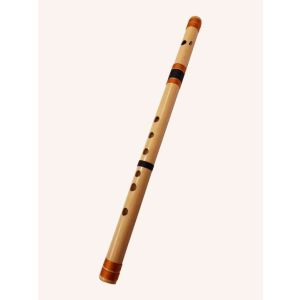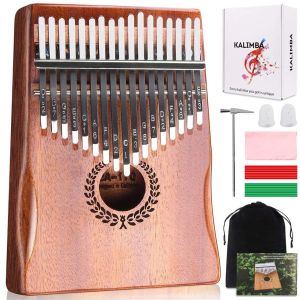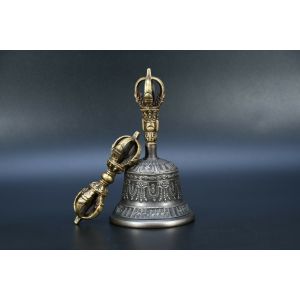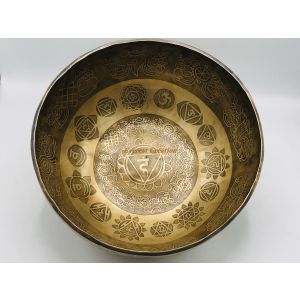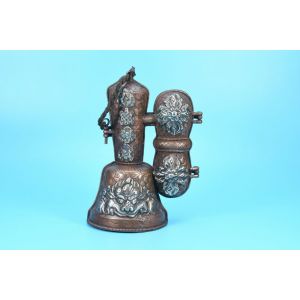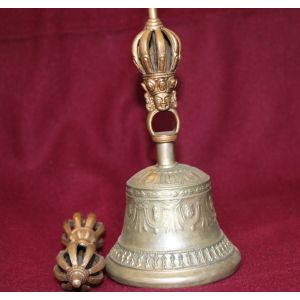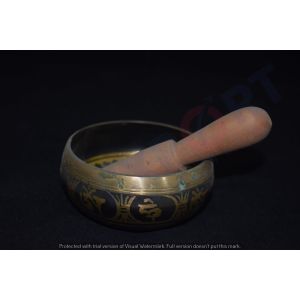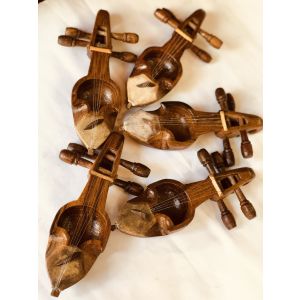About product
Full moon singing bowl is made by hand on a full moon evening of every month by enhancing the subtle moon energy for sound healing and chakra balancing
-Handmade high-quality sound healing Tibetan singing bowl made in Nepal. Cleanses negative energy. Meditation, healing sound immersion therapy. Best size Tibetan singing bowl. This singing bowl comes with Stick, cushion and striker include as shown in pictures. Deep long-lasting beautiful sound gong. This singing bowl is made of seven metals. Those who are looking for real handmade singing bowls from Himalayan will not be disappointing by this bowl.
It comes with 7 stick, 7cushion and 2 stricter including As shown in pictures
In Package, you will receive: 7 Stick, 7 Cushion and Singing Bowl set of seven and 2 felt drum sticks
-(This is a handmade item therefore please note that each one might have slight variations)
THE SEVEN CHAKRA SYSTEM
Chakra is various focal points used in a variety of ancient meditation practices, collectively denominated as Tantra, or the esoteric or inner traditions of Hinduism.
The concept is found in the early traditions of Hinduism. Beliefs differ between the Indian religions, with many Buddhist texts consistently mentioning five chakras, while Hindu sources offer six or even seven. Early Sanskrit texts speak of them both as meditative visualizations combining flowers and mantras and as physical entities in the body. Some modern interpreters speak of them as complexes of electromagnetic variety, the precise degree and variety of which directly arise from a synthetic average of all positive and negative so-called "fields", thus eventuating the complex Nadi. Within kundalini yoga, the techniques of breath exercises, visualizations, mudras, bandhas, kriyas, and mantras are focused on manipulating the flow of subtle energy through chakras.
LIST OF SEVEN CHAKRA AND ATTRIBUTES
Image of chakra location and Sound Description
Name: Sahasrara
CROWN CHAKRA
Keynote: B
Frequency: 480 Hz.
Vowel: Eee
Bija: Om
Element: All
Sound: Om
Energy: Transcendence Highest spiritual centre, pure consciousness, containing neither object nor subject. When the feminine Kundalini Shakti rises to this point, it unites with the masculine Shiva, giving self-realization and samadhi.
In esoteric Buddhism, it is called Mahasukha, the petal lotus of "Great Bliss" corresponding to the fourth state of Four Noble Truths.
Name: Ajna
THIRD EYE CHAKRA
Keynote: A
Frequency: 426.7 Hz.
Vowel: Aye
Bija: Sham
Element: All
Sound: Bells/Space
Energy: Insight, Wisdom Guru chakra or third-eye chakra, the subtle center of energy, where the tantra guru touches the seeker during the initiation ritual (saktipata). He or she commands the awakened kundalini to pass through this centre.
Name: Vishuddha
THROAT CHAKRA
Keynote: G
Frequency: 384 Hz.
Vowel: Eye
Bija: Ham
Element: Ether
Sound: Crickets
Energy: Communication, Creation The Vishuddha is iconographically represented with 16 petals covered with the sixteen Sanskrit vowels. It is associated with the element of space (akasha) and has the seed syllable of the space element Ham at its centre. The residing deity is Panchavaktra shiva, with 5 heads and 4 arms, and the Shakti is Shakini.
In esoteric Buddhism, it is called Sambhoga and is generally considered to be the petal lotus of "Enjoyment" corresponding to the third state of Four Noble Truths.
Name: Anahata
HEART CHAKRA
Keynote: F
Frequency: 341. 3 Hz.
Vowel: Ah
Bija: Yam
Element: Air
Sound: Wind
Energy: Compassion, Love Within it is a yantra of two intersecting triangles, forming a hexagram, symbolising a union of the male and female as well as being the esoteric symbol for the element of air (vayu). The seed mantra of air, Yam, is at its centre. The presiding deity is Ishana Rudra Shiva, and the Shakti is Kakini.
In esoteric Buddhism, this Chakra is called Dharma and is generally considered to be the petal lotus of "Essential nature" and corresponding to the second state of Four Noble Truths
Name: Manipura
SACRAL NAVEL CHAKRA
Keynote: E
Vowel: Oh
Frequency: 320 Hz.
Bija: Ram
Element: Fire
Sound: Roaring Fire
Element: Fire
Energy: Power For the Nath yogi meditation system, this is described as the Madhyama-Shakti or the intermediate stage of self-discovery.
This chakra is represented as an downward pointing triangle representing fire in the middle of a lotus with ten petals. The seed syllable for fire is at its center Ram. The presiding deity is Braddha Rudra, with Lakini as the Shakti
Name: Svadhishthana
SACRAL CHAKRA
Keynote: D
Frequency: 288 Hz
Vowel: Ooo
Bija: Vam
Element: Water
Sound: Ocean
Energy: Life Energy, Svadhisthana is represented with a lotus within which is a crescent moon symbolizing the water element. The seed mantra in its center is Vam representing water. The presiding deity is Brahma, with the Shakti being Rakini (or Chakini).
In esoteric Buddhism, it is called Nirmana, the petal lotus of "Creation" and corresponding to the first state of Four Noble Truths
Name: Muladhara
ROOT CHAKRA
Keynote: C
Frequency: 256 Hz.
Vowel: Uh
Bija: Lam
Element: Earth
Sound: Thunder/Earthquake
Energy: Grounding Dormant Kundalini is often said to be resting here, wrapped three and a half, or seven or twelve times. Sometimes she is wrapped around the black Svayambhu linga, the lowest of three obstructions to her full rising (also known as knots or granthis).
It is symbolised as a four-petaled lotus with a yellow square at its center representing the element of earth.
The seed syllable is Lam for the earth element (pronounced lum),. All sounds, words and mantras in their dormant form rest in the muladhara chakra, where Ganesha resides, while the Shakti is Dakini.

